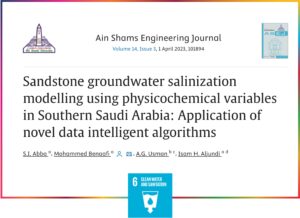
The study, co-authored by a researcher from Near East University, focuses on advancing groundwater management through reliable modeling and simulation techniques, with a specific emphasis on addressing groundwater salinization. This issue is tackled through the application of innovative technologies and computational methods, including Least Square-boost (LSQ-Boost), Gaussian Process regression (GPR), support vector regression (SVR), and stepwise linear regression (SWLR), aiming to model Electrical Conductivity (EC) as an early indicator of salinization.
The research utilizes data from sandstone aquifers, encompassing physical, chemical, and hydrogeochemical parameters. Four input combinations (C1-C4) are developed using linear and ranking nonlinear feature selection methods. The study evaluates the performance of these combinations through metrics such as mean square error (MSE), mean absolute error (MAE), root mean square error (RMSE), Nash-Sutcliffe efficiency (NSE), and correlation coefficient (R). The impact of multicollinearity is also considered, with specific variables like Total Dissolved Solids (TDS) excluded in certain combinations.
Among the computational techniques applied, the Gaussian Process regression (GPR) stands out as the superior model, especially in the C1 combination, demonstrating high predictive accuracy during the verification phase. Other intelligent models, including SVR and LSQ-Boost, exhibit promising results for specific combinations, showcasing predictive accuracy levels ranging from 88% to 90%.
The study underscores the effectiveness of the GPR algorithm as an excellent tool for predicting EC in groundwater salinization modeling. Furthermore, it suggests incorporating directly correlated positive variables, encompassing hydrochemical and topographic factors, to enhance the precision and efficacy of groundwater-related planning and decision-making.
In conclusion, the research introduces a novel approach by directly modeling EC in sandstone aquifers, providing valuable insights into groundwater salinization dynamics. The application of advanced computational techniques, particularly GPR, showcases the potential for improving water resource planning and decision-making. This work contributes to the understanding of influential factors in groundwater salinization, offering a robust methodology applicable across various scientific disciplines and emphasizing the importance of incorporating correlated variables for comprehensive modeling.
More Information:
https://www.sciencedirect.com/science/article/pii/S2090447922002052